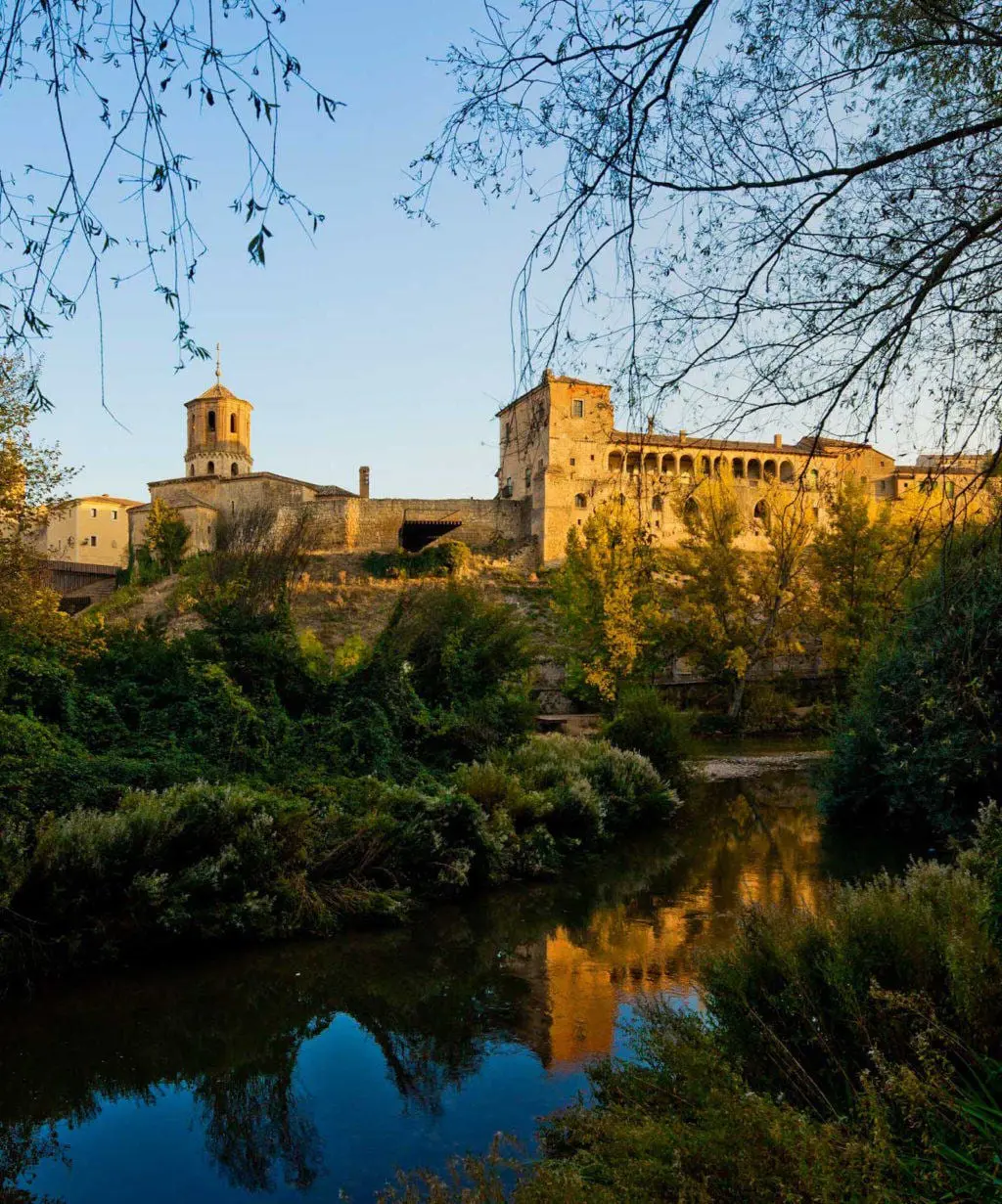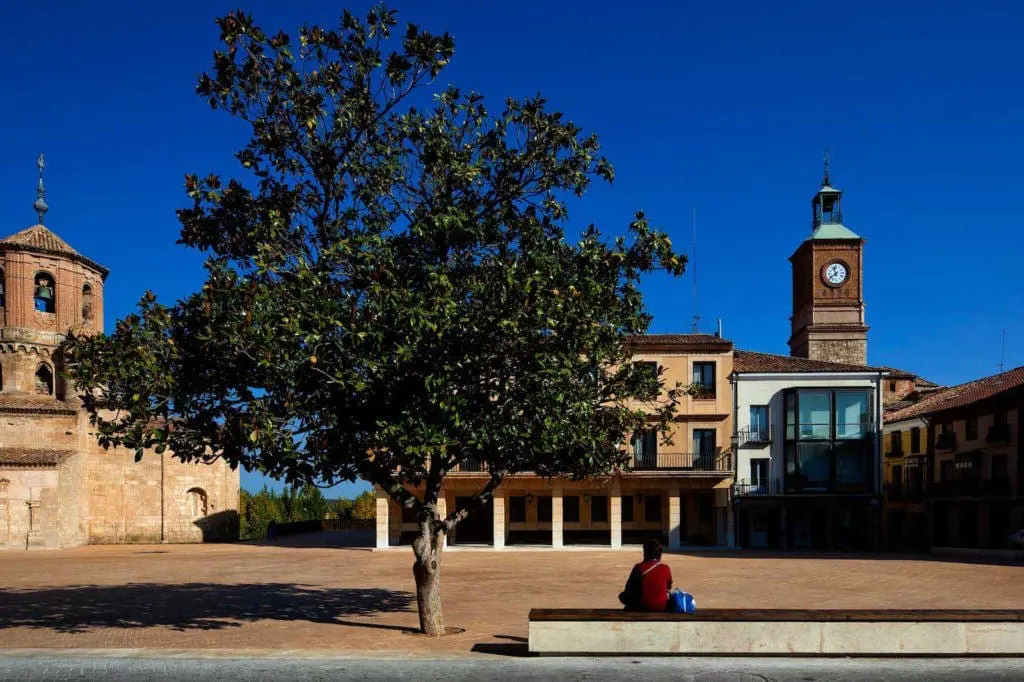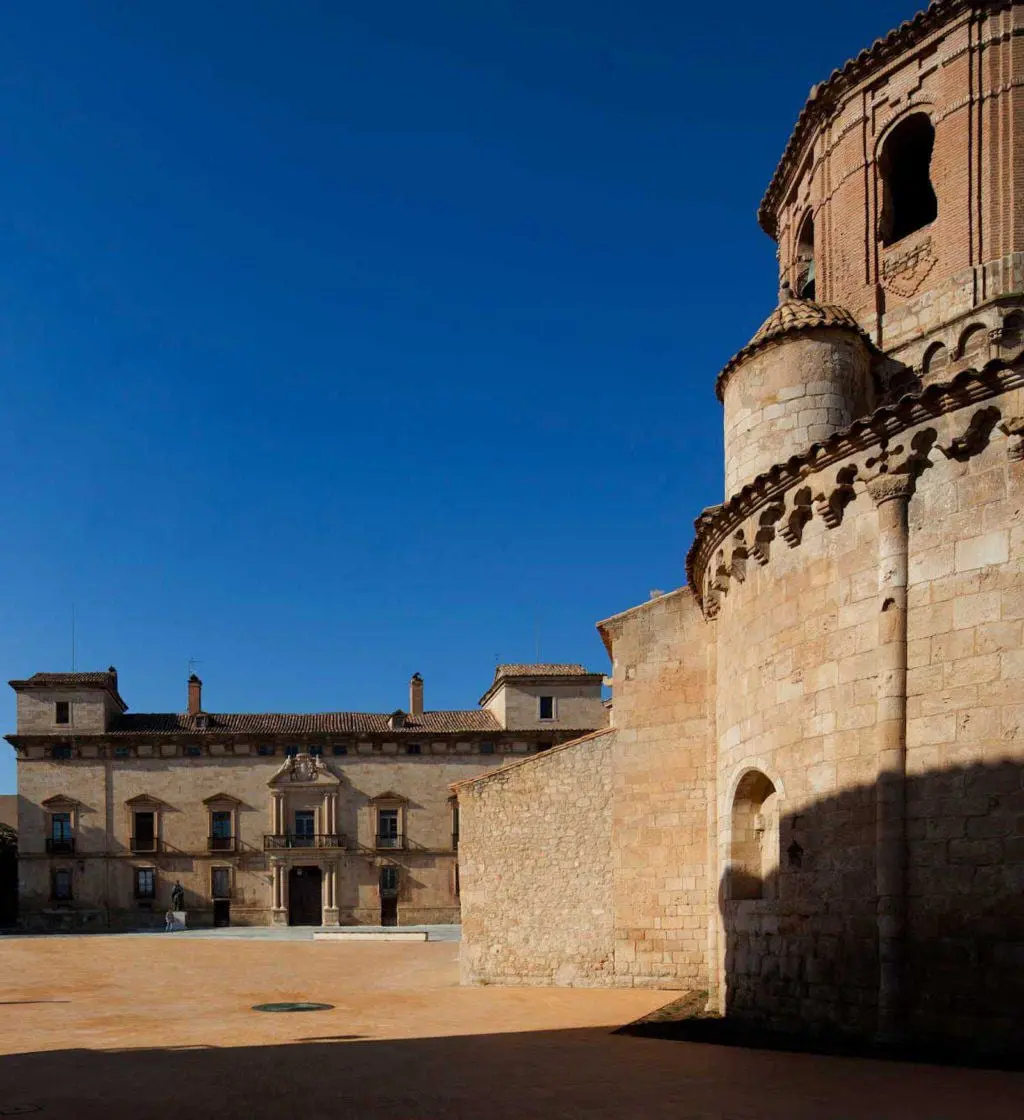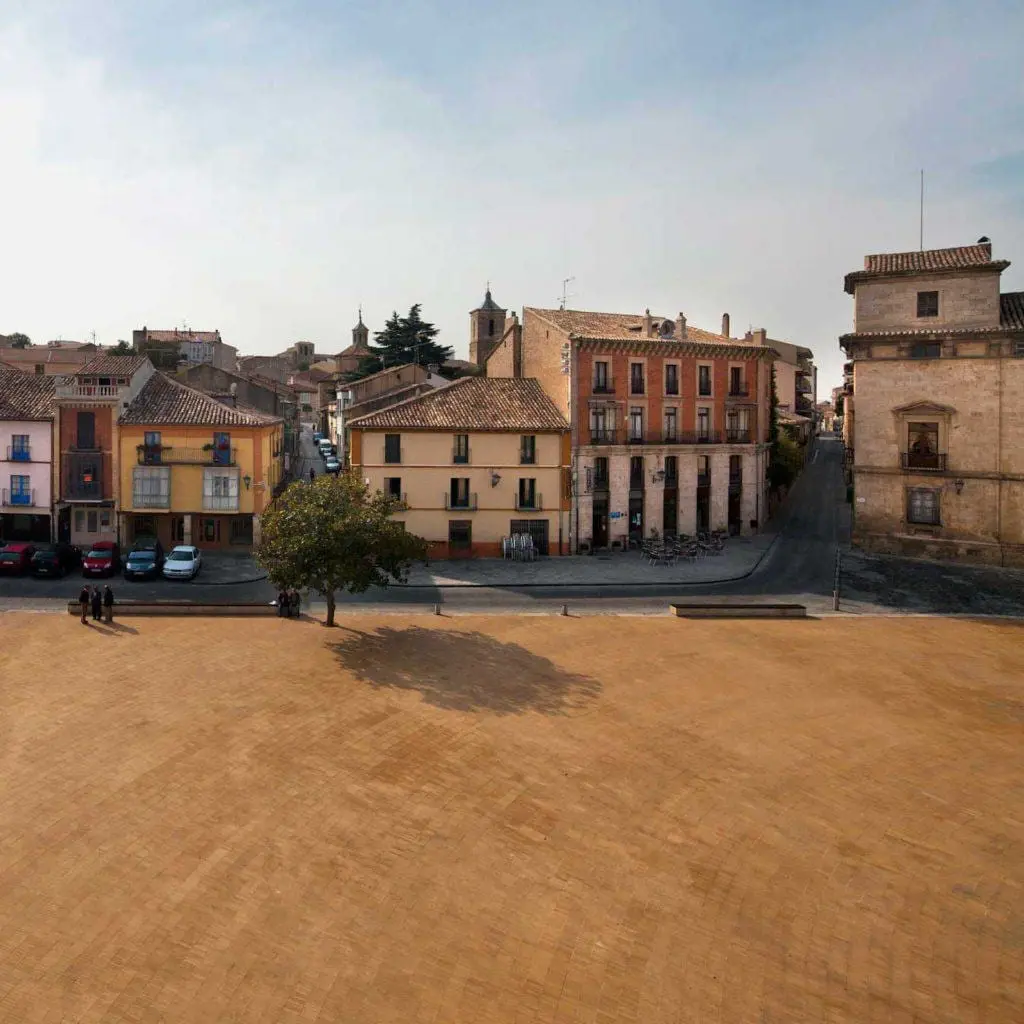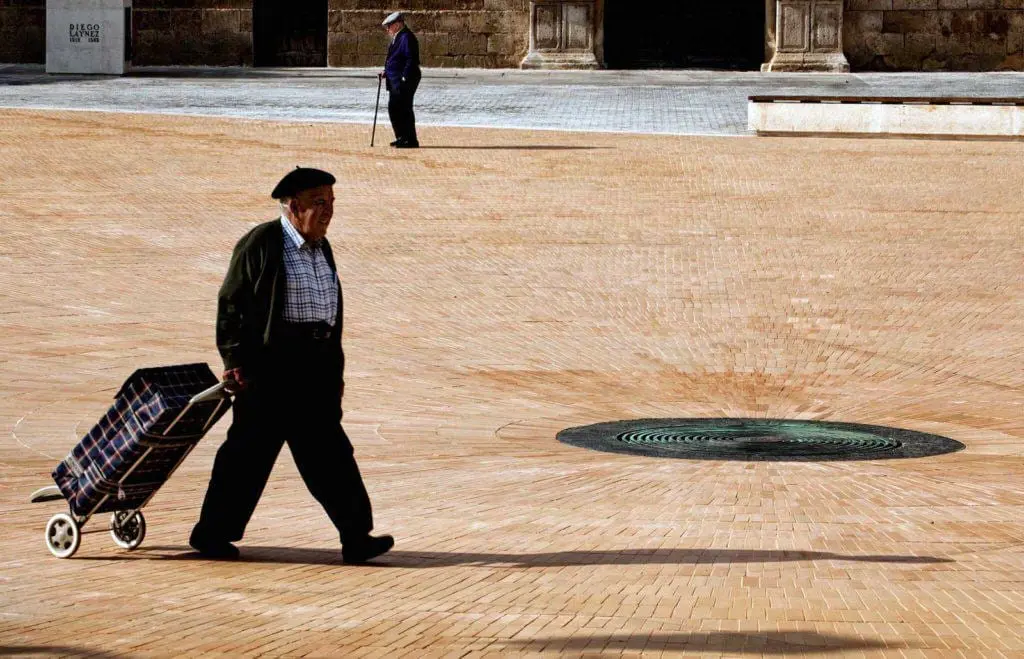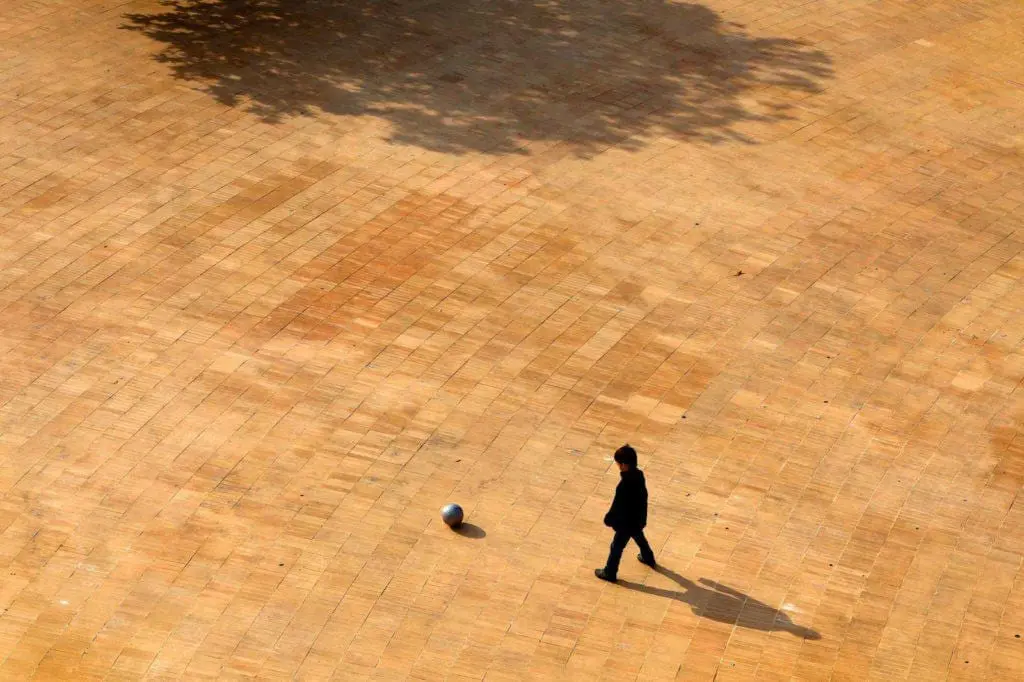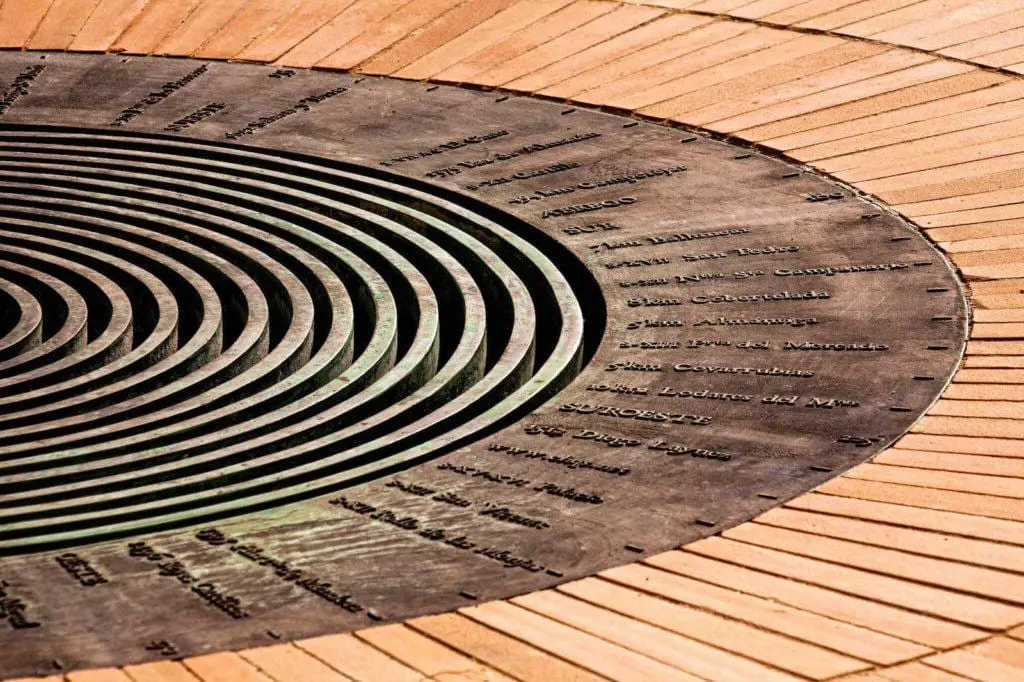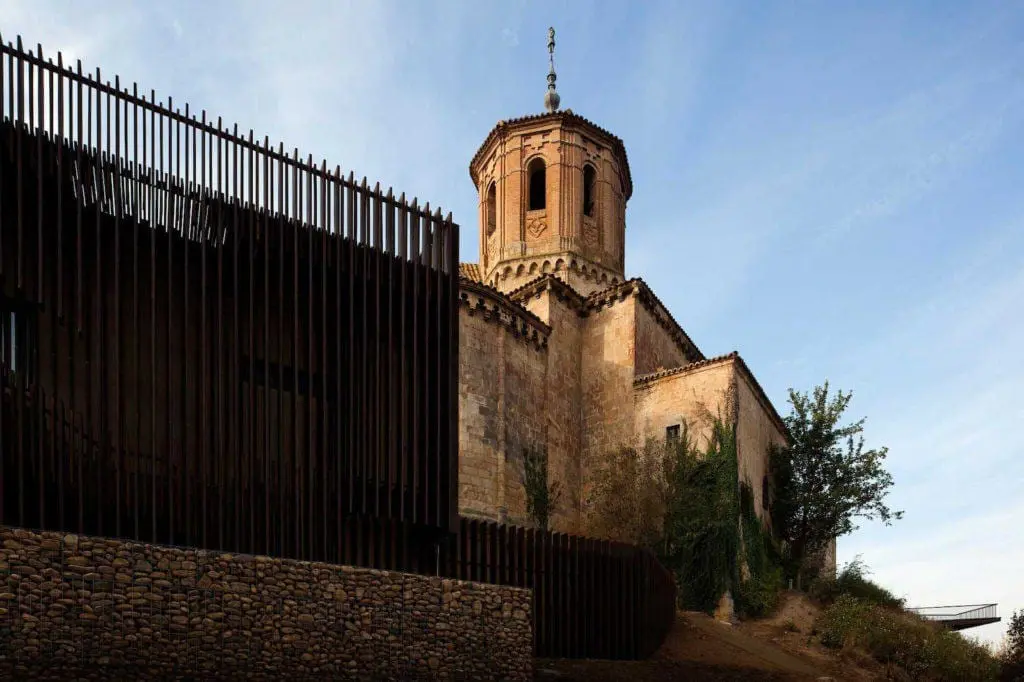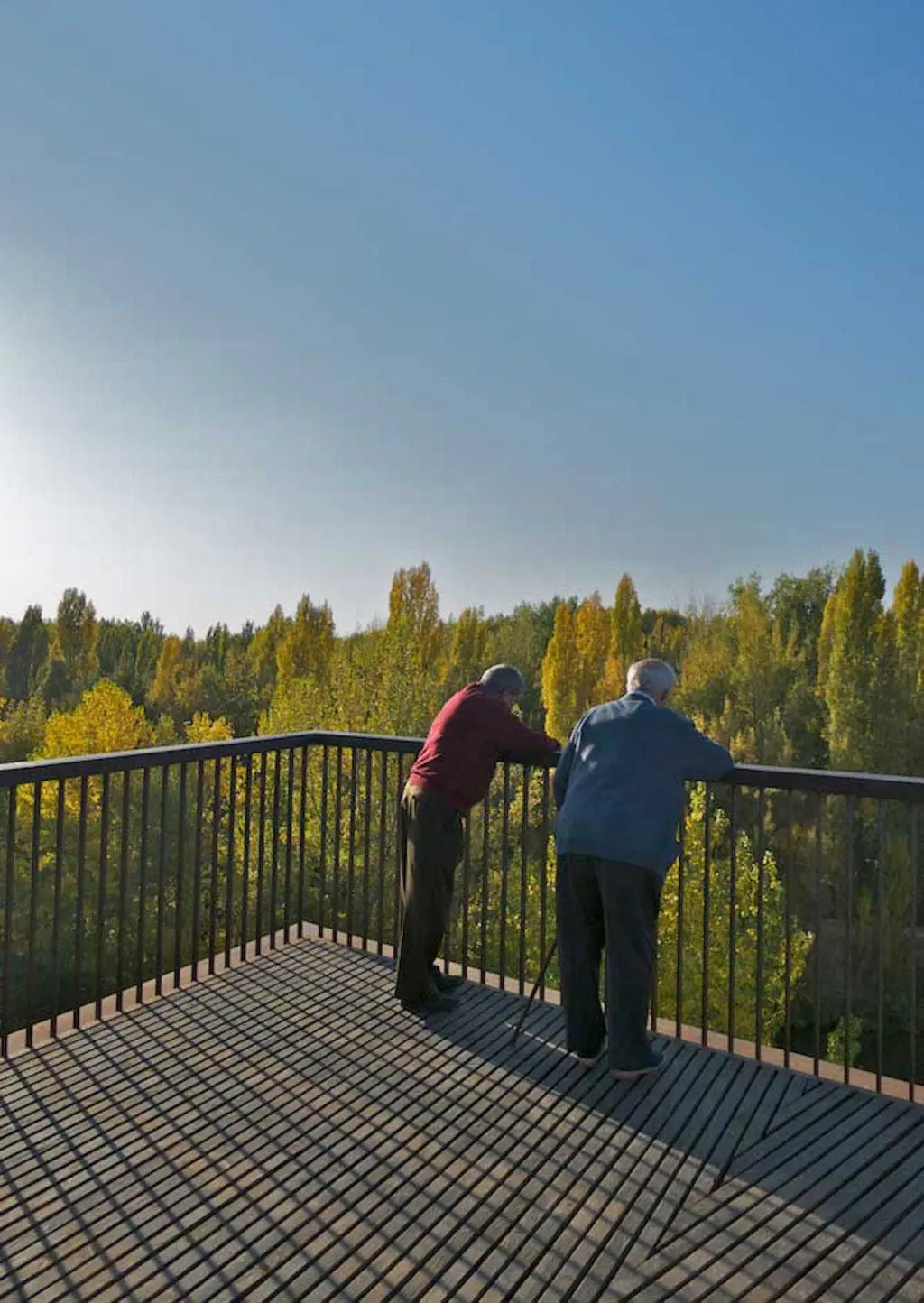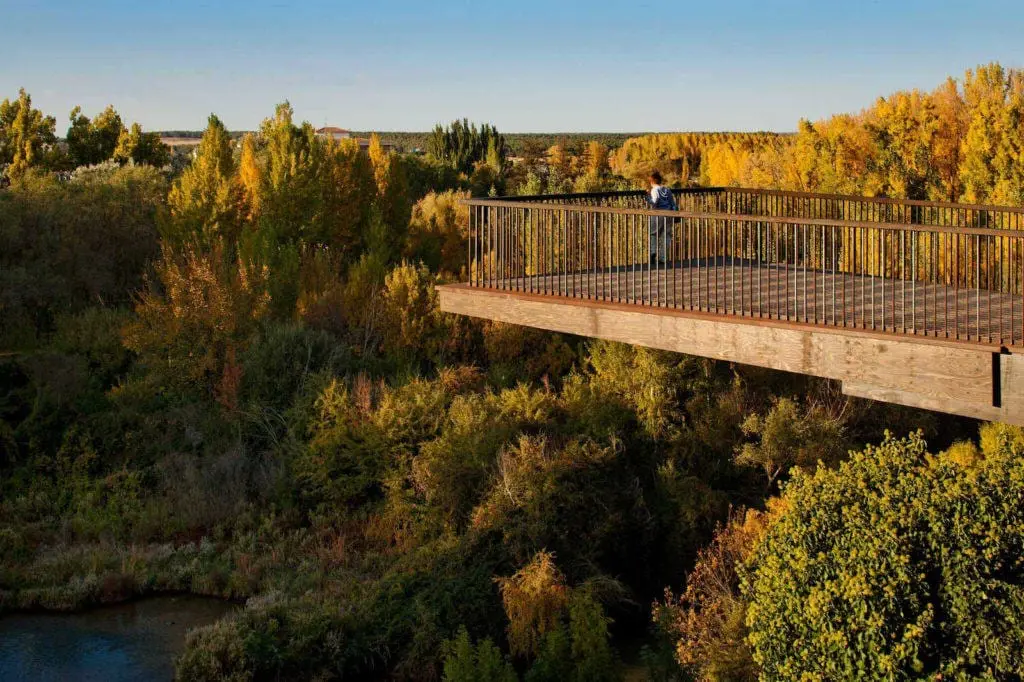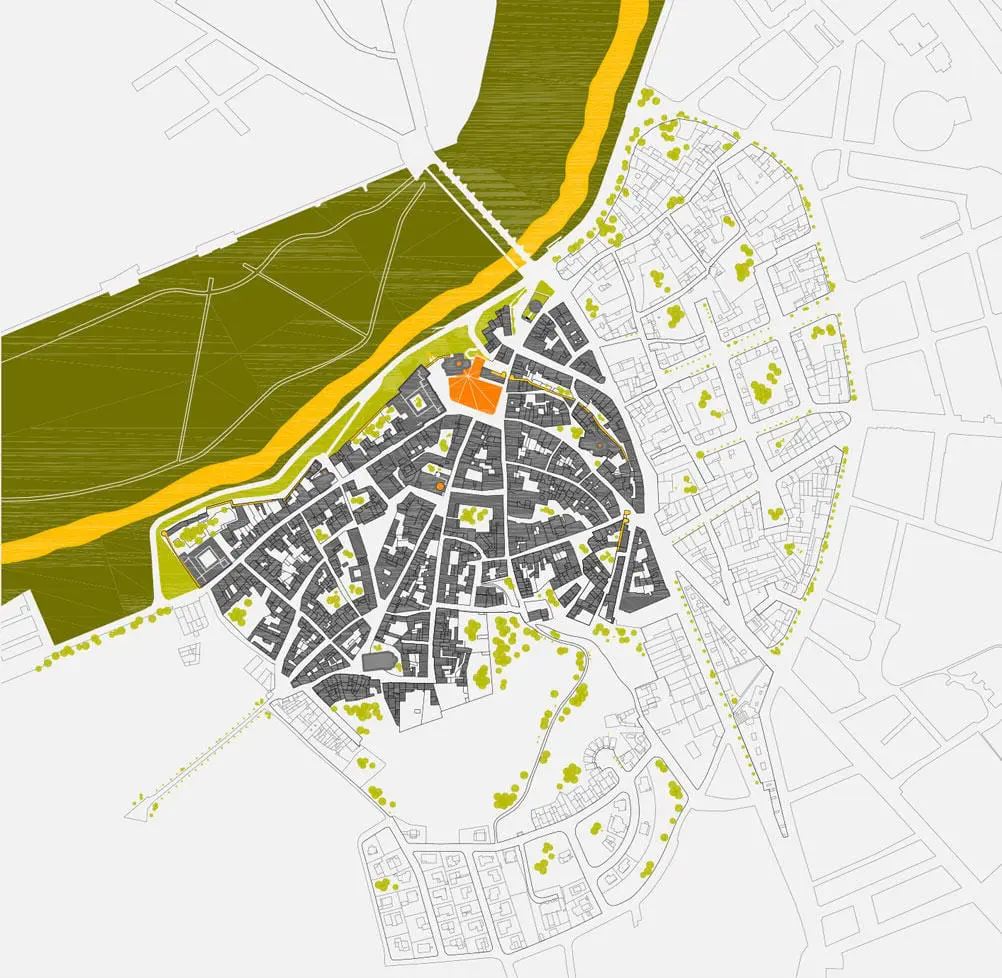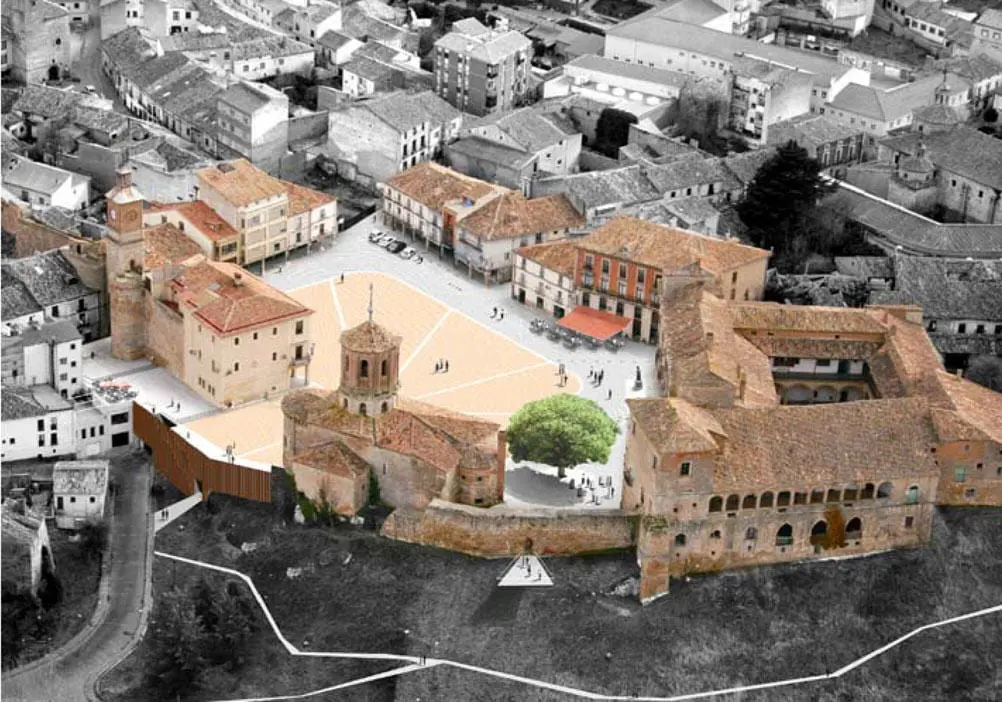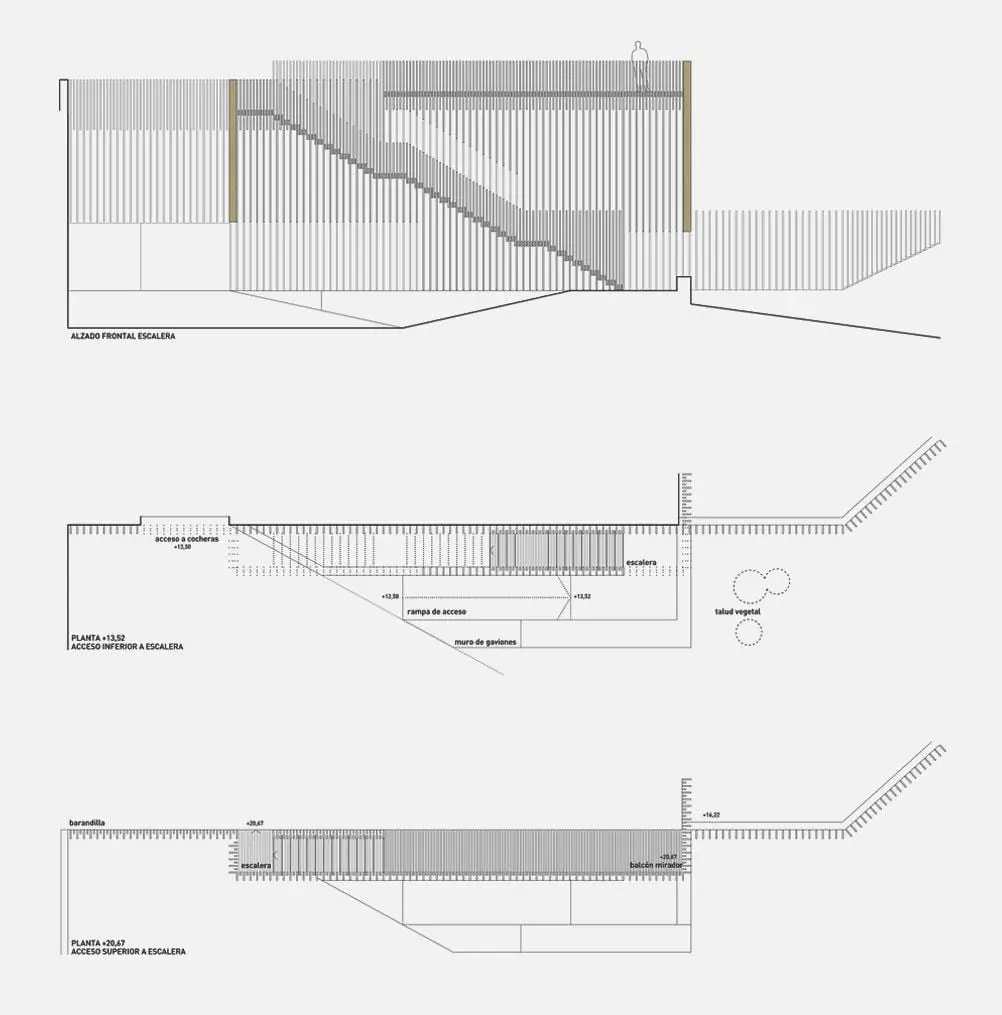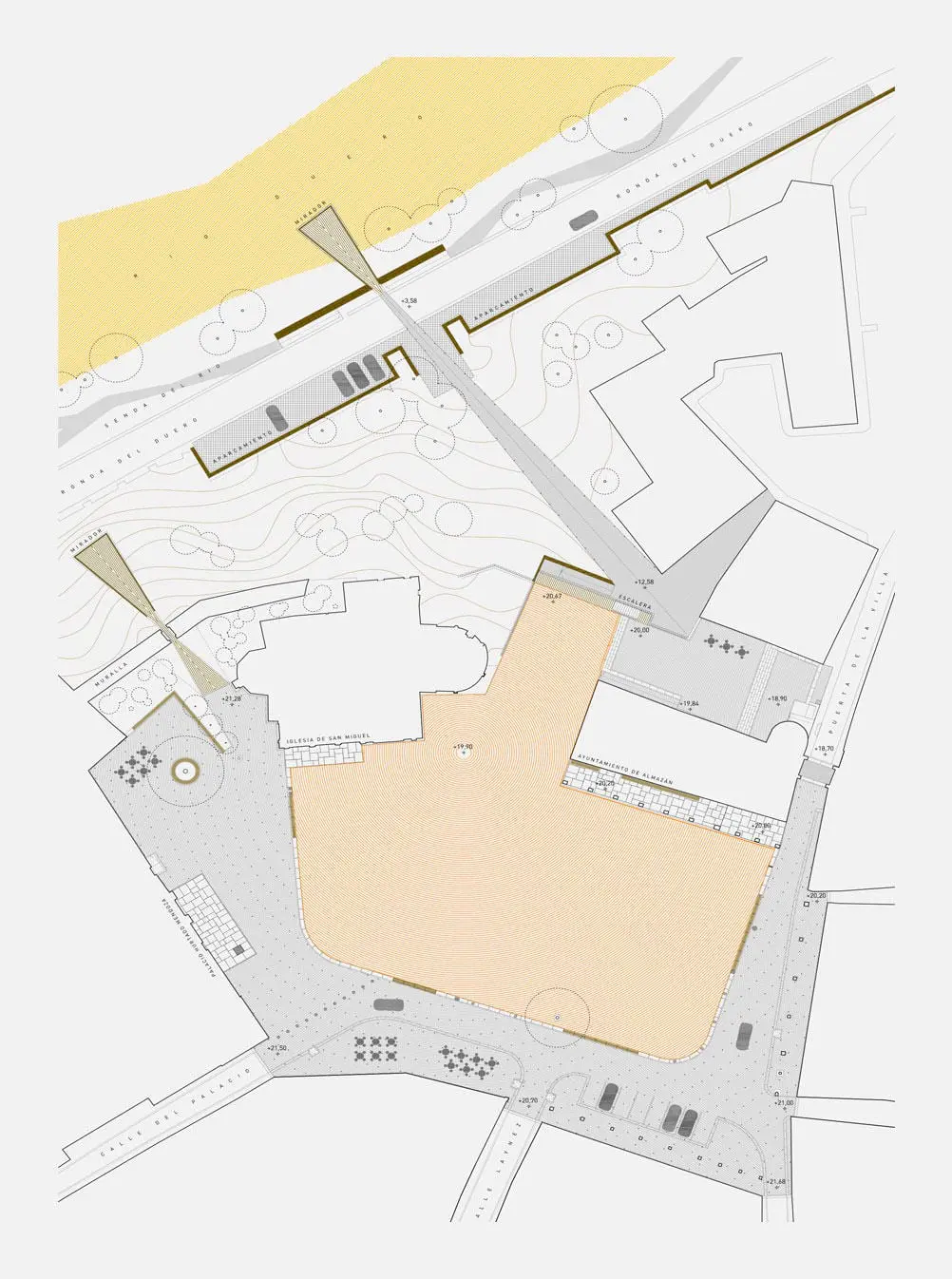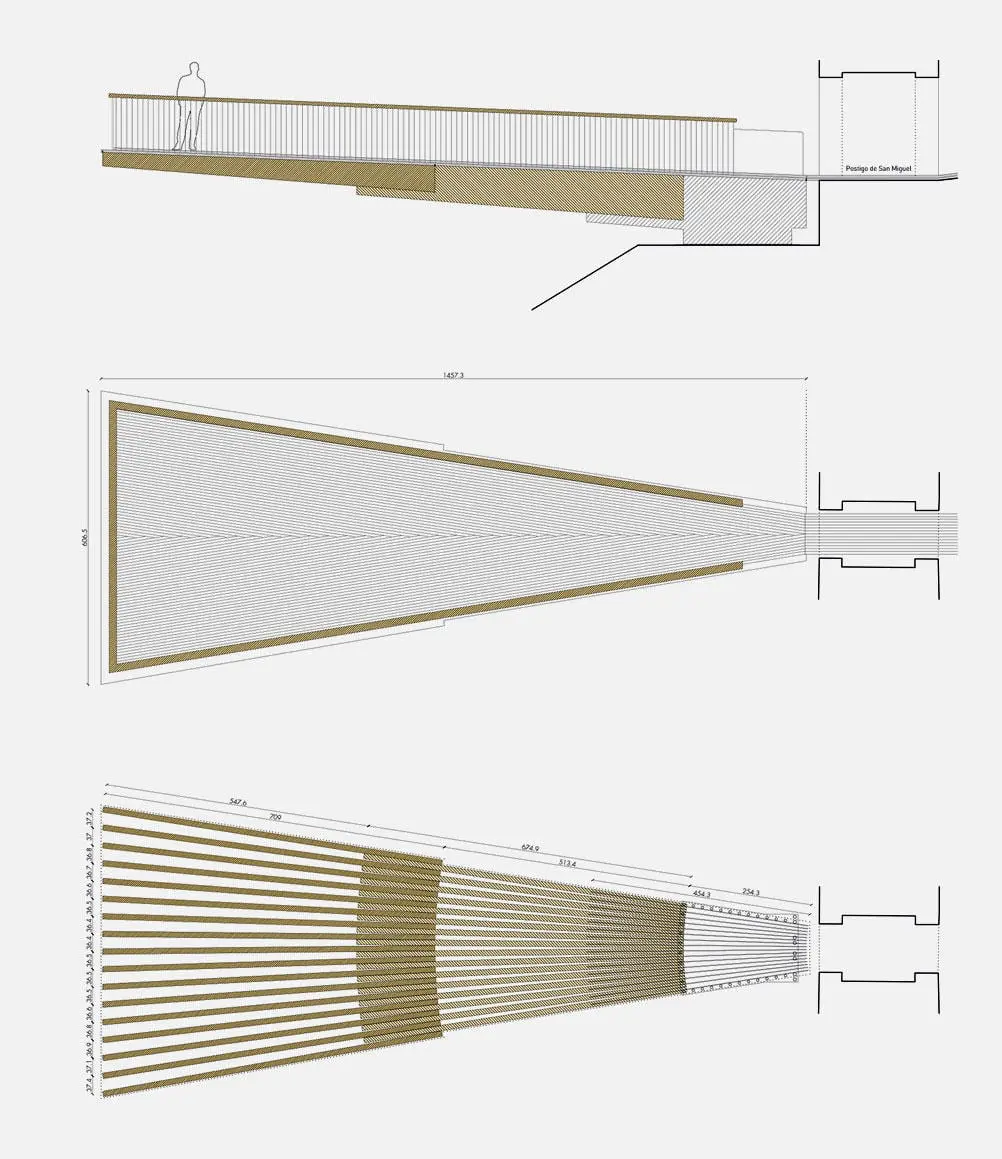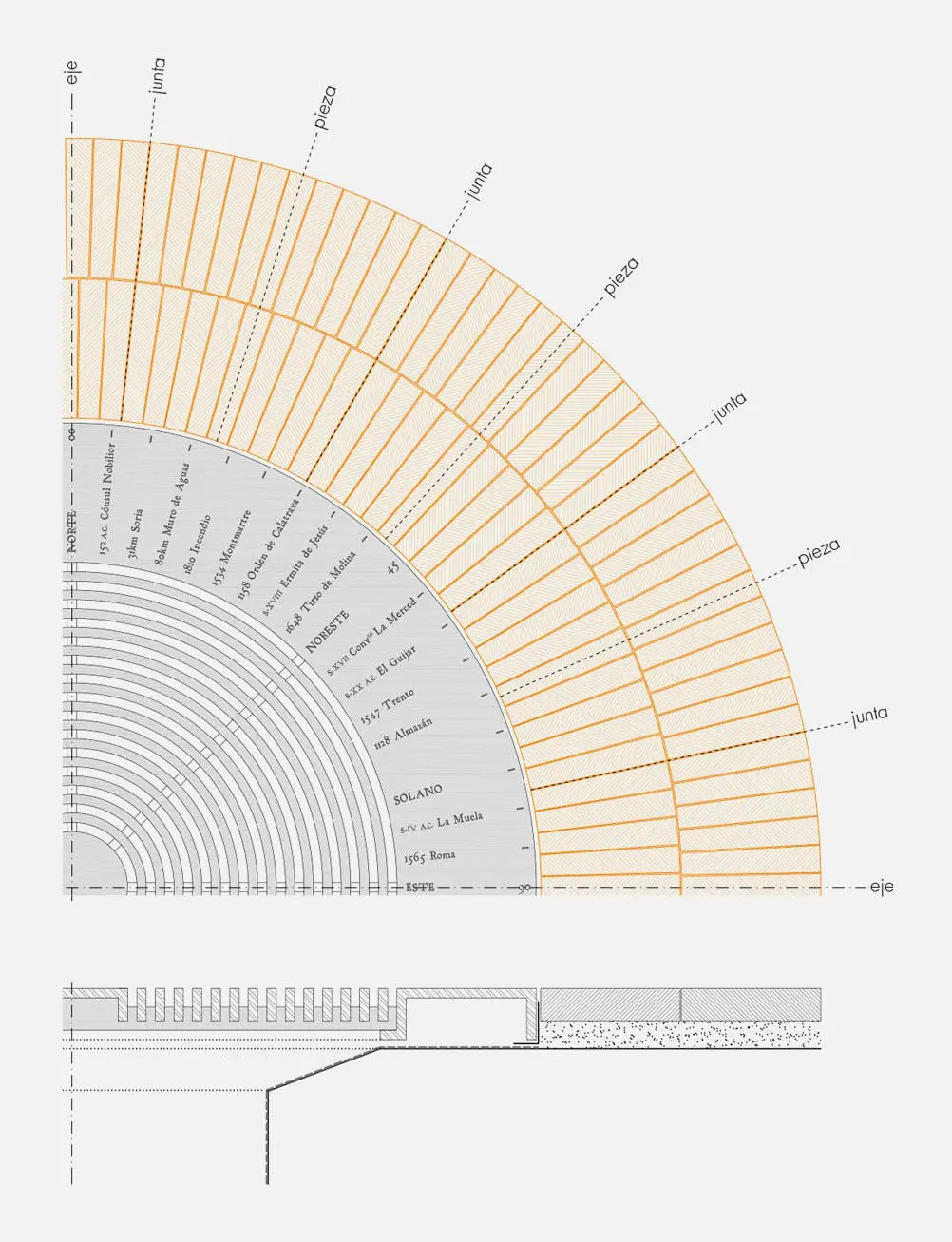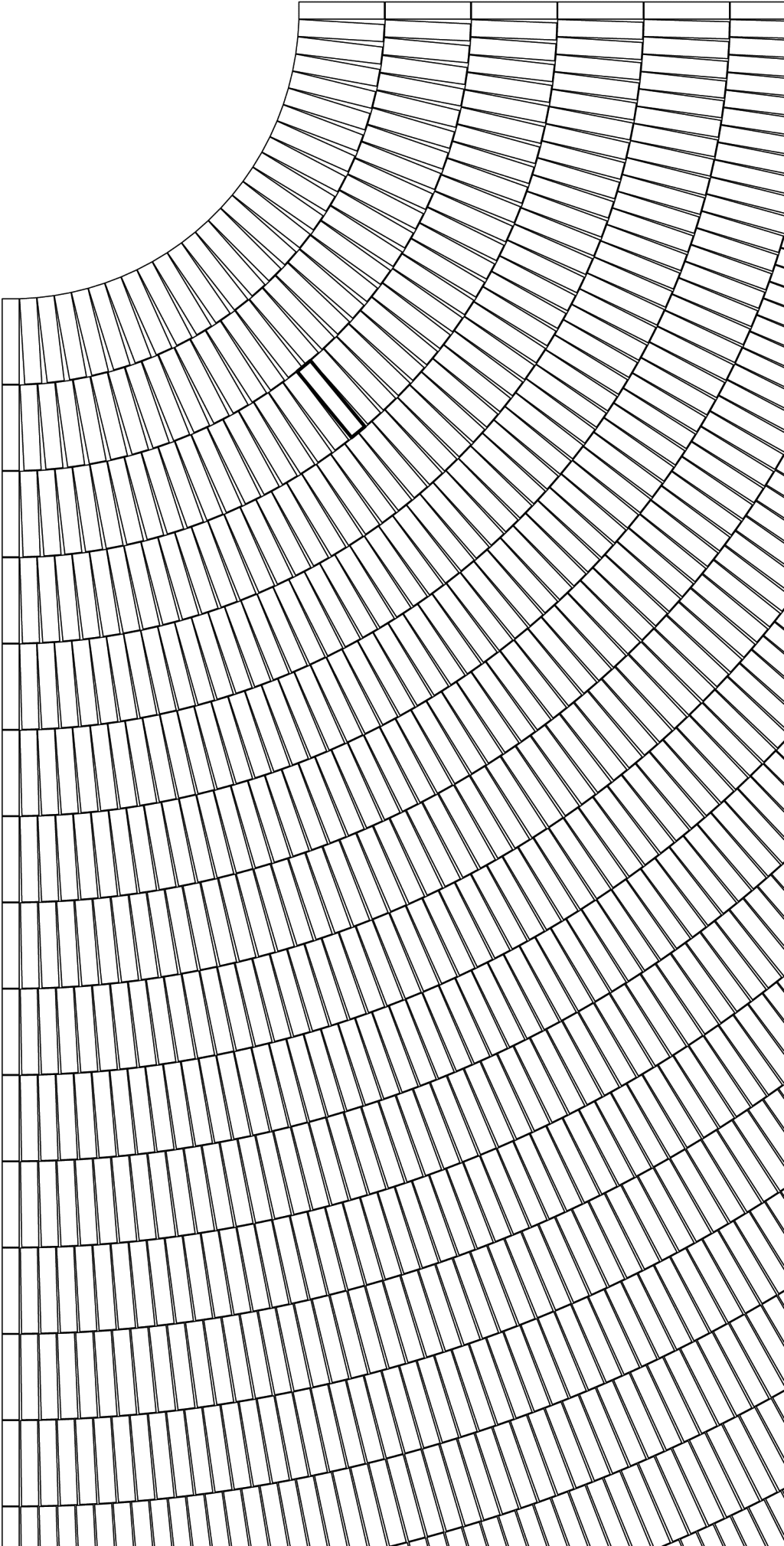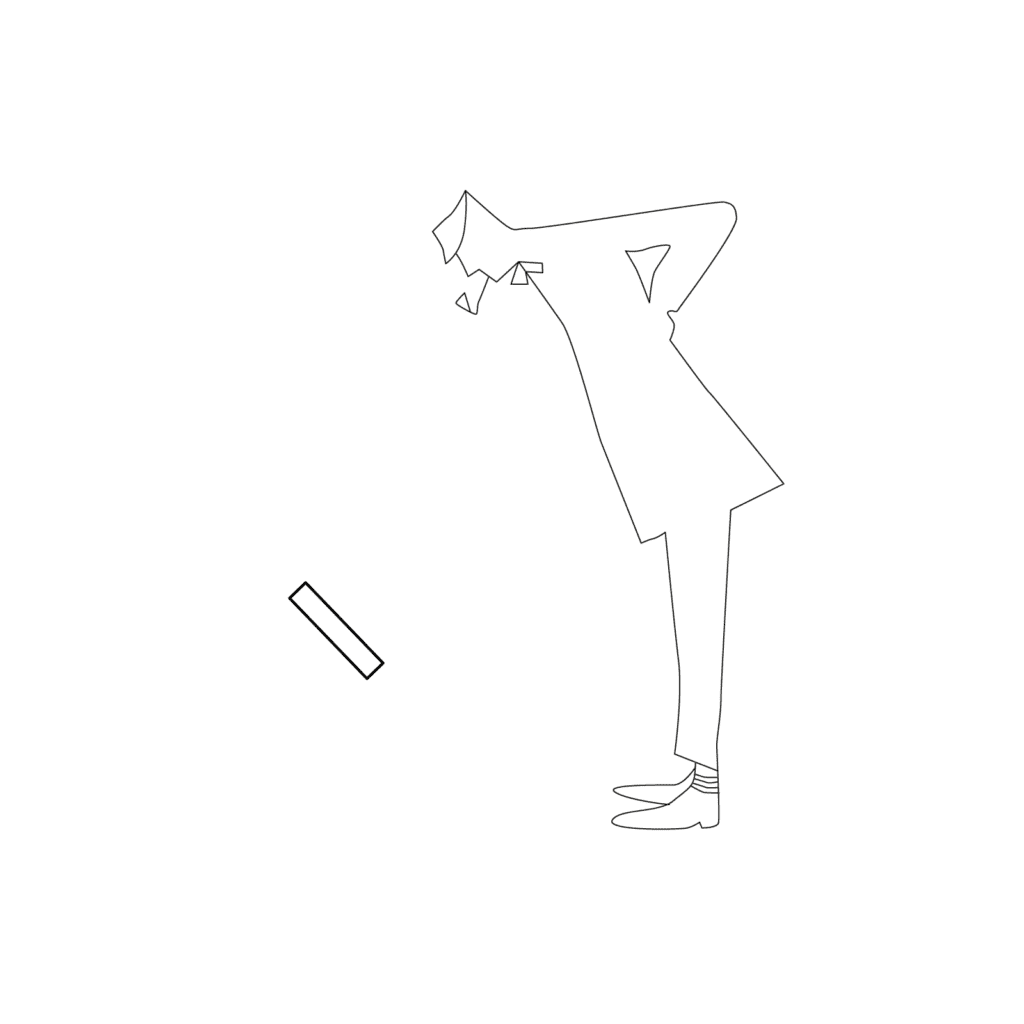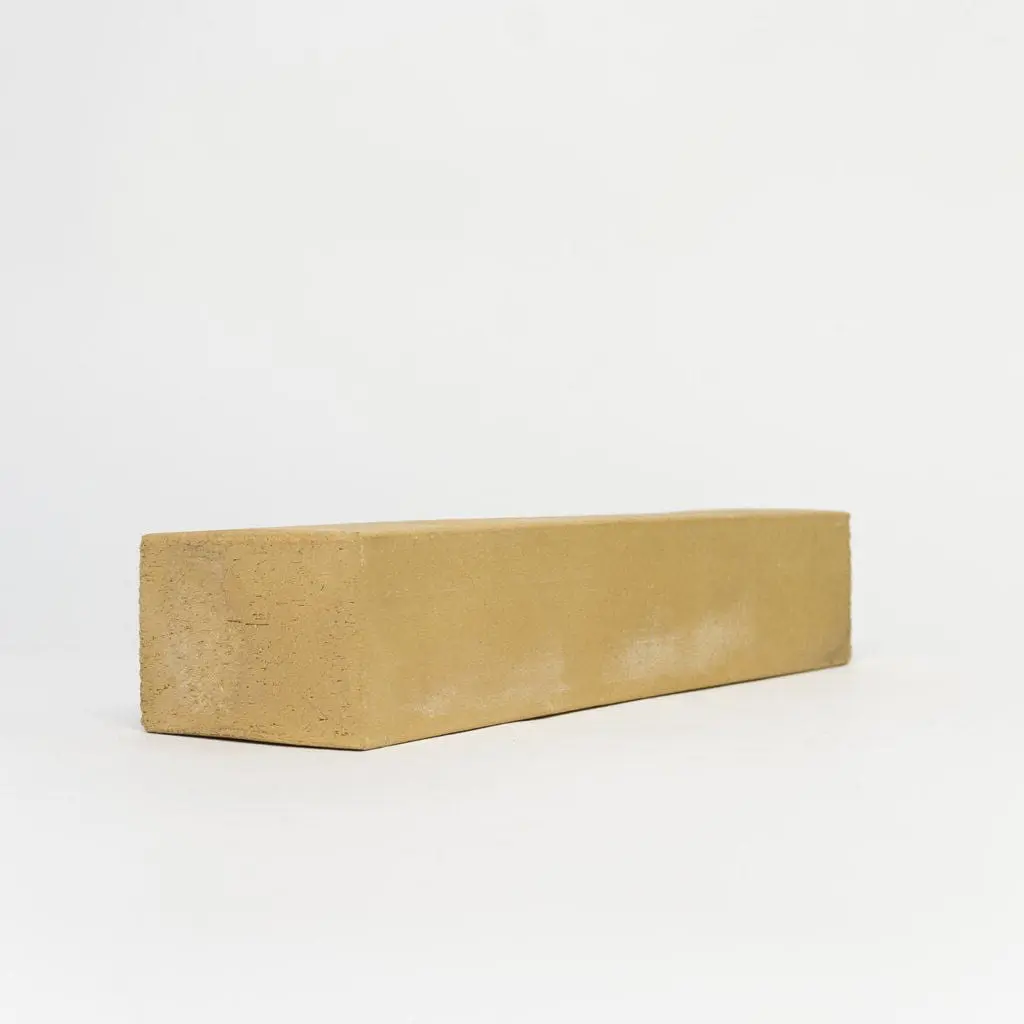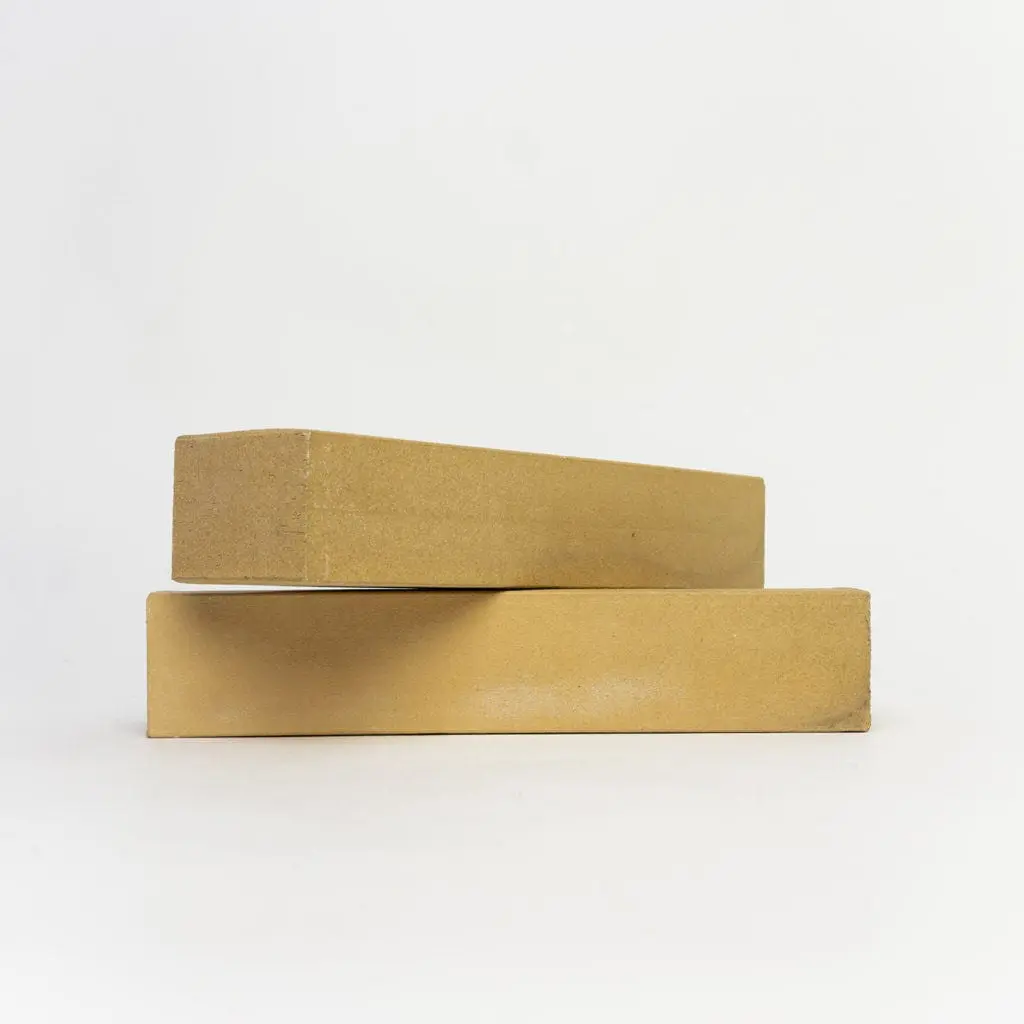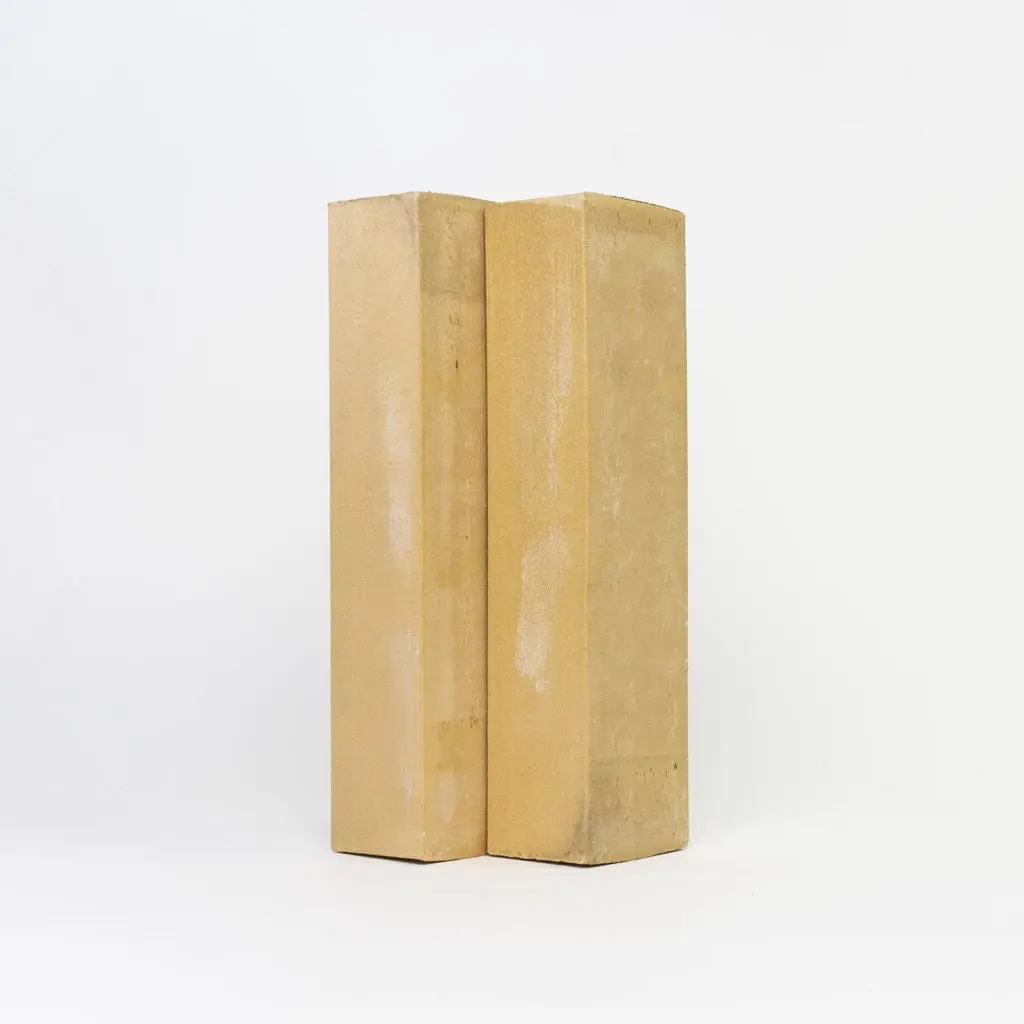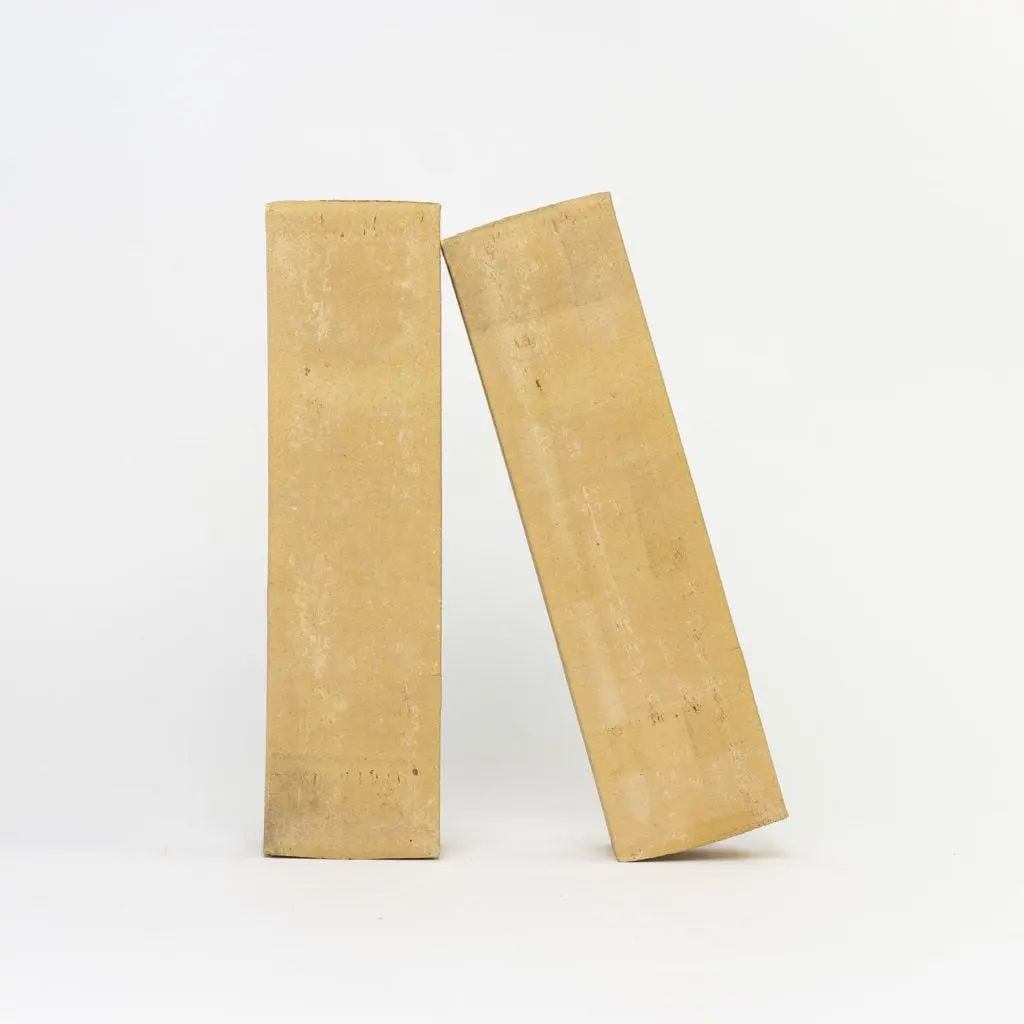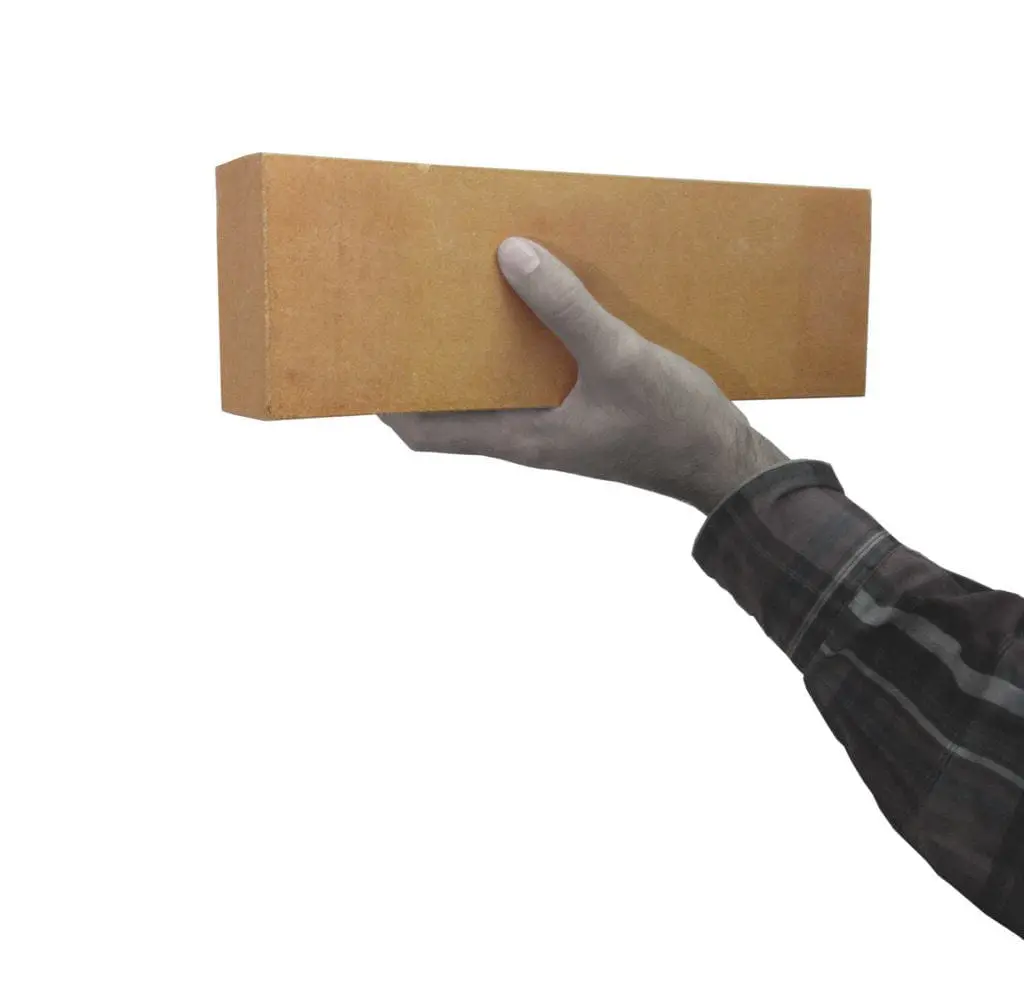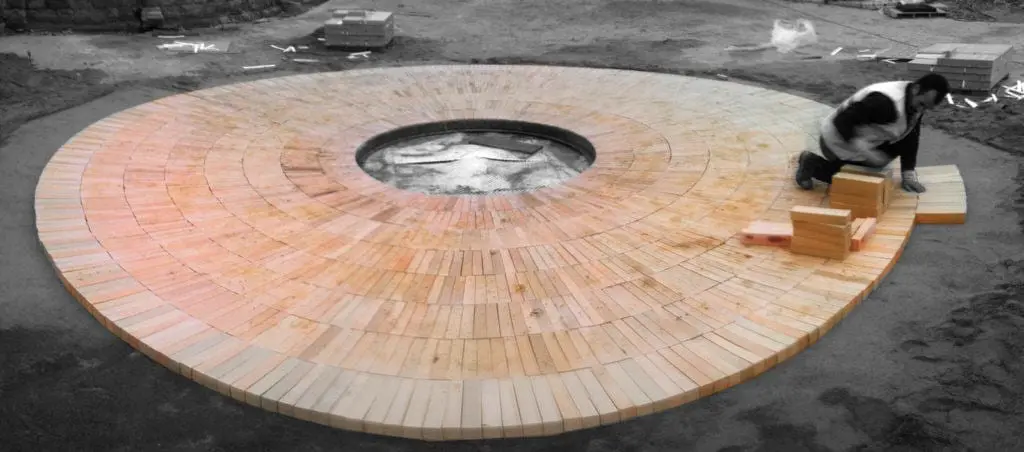Surrounded by extraordinary monumental structures, the Plaza Mayor of Almazán is a clear example of the typical Castilian square in the old town. Its position on top of a hill overlooking the sinuous curves of the River Duero make it a public space set in a magnificent landscape, sharing the stage with the town’s twelfth century walls, the fifteenth century Palace of the Hurtado de Mendoza family, and the twelfth century Church of St. Michael. The requirements of the tender from the Ministry of Public Works and the Local Council of Almazán focused on organising vehicle traffic in the square, removing the obstacles that made it inaccessible and reorganising the obsolete network of infrastructures so that the space could be used as a venue for outdoor activities and local festivals.
Making use of topography, urban fixtures, the layout and material used for the paving, the project helps to consolidate the original historical configuration in the shape of an elongated rectangle or cuadrilongo as described by Pascual Madoz in 1845, and to recover spaces such as “La Rinconada.” The space destined for vehicle traffic that once occupied a large part of the square has been reduced, with pedestrians now reclaiming their role as the protagonists of this public space, and the monumental setting as a whole has recovered the historical significance it had lost over the years. The remodelling project has been completed by working on specific areas in the immediate surroundings, helping to integrate the square more globally in relation to the city and the landscape. A new staircase has been designed to connect the Plaza Mayor with the Ronda del Duero, a road that runs parallel to the river, helping to compensate for the difference in height and connect these two spaces. Two new viewpoints have been created that help to connect the square with the beautiful surrounding landscape; one in the Postigo de San Miguel de la Muralla, with access from the Plaza Mayor and looking out over the landscape, and another looking out over the River Duero, with access to the Ronda from the river and helping to complete the project in the surrounding areas. The use of a projecting structure that minimises contact with the surrounding buildings has helped to integrate the new structures with the existing historical buildings of Almazán.
The decision to use ceramic tiles as the new paving material for the main square in Almazán posed a challenge from the outset at every level. The aggressive winter conditions in Soria, with constantly freezing temperatures, and the need to withstand wheeled traffic, impacts and to have a slip-resistant surface for pedestrians, together with the location of the Plaza Mayor within an extraordinary ensemble of historic buildings, led to the need to create a tile that combined solidity with a delicate visual appeal. In a clear intent to recover all of the warmth and chromatic vitality of fired clay, the design shunned the use of the typical clinker cobblestones used to excess in recent years in numerous Spanish squares.
Ceramic piece. An extensive research into manufacturing and firing processes with clay is made with the aim of obtaining a tile in natural sienna tones similar to terracotta, but which, unlike this material, was capable of providing a high level of resistance with a low-slip surface. In turn, the difficulty involved in obtaining an extruded ceramic tile with larger than standard dimensions (30 x 8 x 6 cm) was combined with the need to reduce possible variations in size after drying to a minimum, so that the paving tiles could be laid in concentric rows with barely any joints. In order to achieve the required colour without dyes, numerous firing tests were carried out mixing different proportions of two types of clay with quartz additives. These clays were already in use in Roman times to make the ceramic amphorae used to store olive oil transported to Rome. After this stringent manufacturing process, in which the tile was fired at 1220oC in 36- hour cycles, a ceramic parallelepiped was obtained with technical qualities that exceeded all standard requirements in terms of solidity, slip resistance and frost resistance, without losing the colour and natural elegance of fired clay.
Tile of Spain Awards ASCER 2012. Distinction of honor Architecture category
